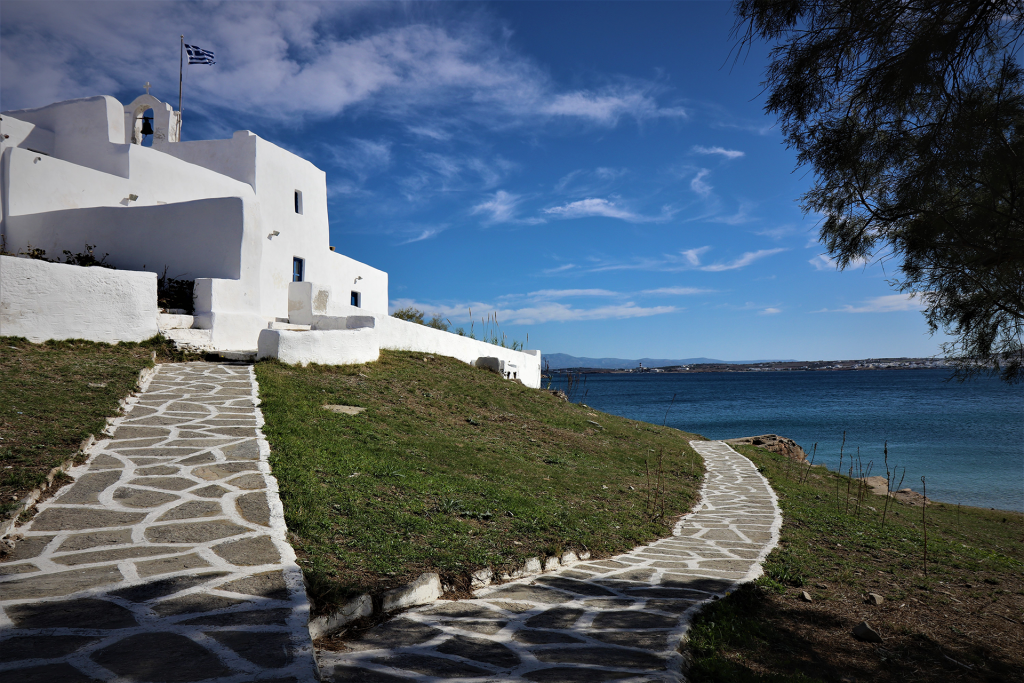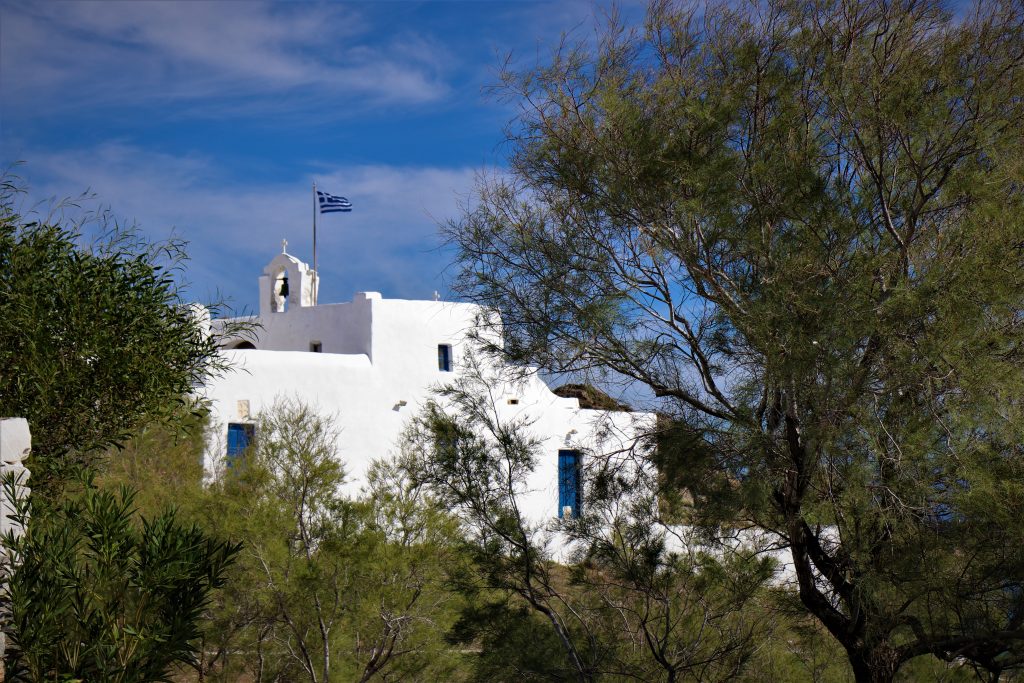
The Monastery of Ai Yiannis Detis
The name Agios Ioannis or Ai Yianis (Saint John) can be found as early as 1530 in manuscript portolan charts found at the Library of Greek Parliament and that of Zagora in Pelion, while a relative report exists in the first printed portolan of D. Tagia (Venice 1573). In the maps of the Russian fleet where the troop installations are shown to be located in the bay of Naoussa (1770-1774) and in later maps (1776 Gouffier) a building is shown where the present day monastery is located but without any mention which indicates that it is a monastery or church.


An inscription at the main church of the monastery reports of a renovation undertaken by the monk Joseph on June 16 1806. From the texts of the Parian P. Dimitrakopoulou, member of the Filiki Eteria and a minister in the first revolutionary government of Greece, we know that a “lazaretto” operated in the area of the monastery for the ships that arrived in Paros. After a law of king Othon regarding monasteries, the monastery of Agios Ioannis is abandoned by the monks. In 1964 the Dutch artist Gizella D’aily takes residence at the monastery of Agios Ioannis with the permission of the ecclesiastical and community authority and remains there with some interruptions until 1982. The building of the monastery and its neighbouring cells are repaired and maintained during her stay there.
The festival of the monastery of Agios Ioannis Detis is celebrated on August 29, the day of the decapitation of St. John the Precursor. Pilgrims and religious followers assemble at the monastery for an all night mass on the eve of the festival and remain until the early morning hours. According to the doctor and folklorist Othona Kapari the title of Detis, which means he who ties up or heals in Greek, came about on account of the anchoring of many boats in the natural harbour of Agios Ioannis or because of the healing of many of Naoussas’ residents from Malaria in the 18th and 19th century.


